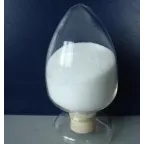What is monoammonium phosphate used for?
Monoammonium phosphate (MAP) is a widely used fertilizer and an important source of phosphorus and nitrogen for plants. However, its applications extend beyond just fertilizer use. Here are some of the main uses of monoammonium phosphate:
Fertilizer: MAP is primarily used as a fertilizer in agriculture and horticulture. It provides plants with readily available phosphorus and nitrogen, two essential nutrients required for healthy growth and development. Phosphorus is crucial for root development, flower formation, and overall plant vigor, while nitrogen is necessary for leafy green growth and protein synthesis. MAP is commonly applied to soil either as a standalone fertilizer or in combination with other nutrients to meet specific crop requirements.
Fire Retardant: MAP is also used as a fire retardant in various applications. When mixed with water, it forms a solution that can be sprayed onto surfaces to inhibit the spread of flames. This makes it valuable for firefighting efforts, particularly in combating wildfires and protecting structures from fire damage. MAP works by releasing ammonia gas and phosphoric acid, which react with the burning materials to create a barrier that suppresses combustion.

Food Additive: In the food industry, MAP is used as a food additive, primarily in baking powders and leavening agents. It serves as an acidulant and leavening agent, helping dough rise and achieve the desired texture in baked goods. MAP reacts with alkaline ingredients, releasing carbon dioxide gas, which causes the dough to expand and become lighter and more porous during baking.
Water Treatment: MAP is sometimes employed in water treatment processes to prevent the formation of scale and corrosion in industrial equipment and plumbing systems. It acts as a sequestering agent, binding with metal ions in water to inhibit their precipitation and deposition onto surfaces. This helps maintain the efficiency and longevity of water distribution systems, boilers, and cooling towers.
pH Buffer: In laboratory and chemical manufacturing applications, MAP is used as a buffering agent to control pH levels in aqueous solutions. It can help stabilize acidic or alkaline solutions, ensuring that the desired pH range is maintained for optimal chemical reactions or product quality.
Yeast Nutrient: MAP is occasionally used as a yeast nutrient in fermentation processes, particularly in winemaking and brewing. The phosphorus and nitrogen provided by MAP can support yeast metabolism and fermentation activity, leading to improved fermentation kinetics and product consistency.
Overall, monoammonium phosphate Fertilizer serves diverse purposes ranging from agricultural fertilization to fire suppression, food processing, water treatment, pH regulation, and fermentation. Its versatility and effectiveness make it a valuable compound in various industries and applications.

Comments
0